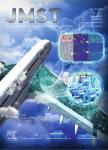Negative Temperature Coefficient of Resistivity in Bulk Nanostructured Ag
Negative Temperature Coefficient of Resistivity in Bulk Nanostructured Ag作者机构:Department of Materials Science and Engineering University of Science and Technology of China Hefei 230026 China
出 版 物:《Journal of Materials Science & Technology》 (材料科学技术(英文版))
年 卷 期:2000年第16卷第5期
页 面:521-524页
核心收录:
学科分类:08[工学] 0805[工学-材料科学与工程(可授工学、理学学位)] 080502[工学-材料学]
基 金:the National Natural Science FOundation of China under grant! No.19974041 the National Major Fundamental ResearCh Program-Nal
主 题:Negative Temperature Coefficient of Resistivity in Bulk Nanostructured Ag
摘 要:The change of the temperature coefficient of resistivity (a) with the particle size, dp, and the grain size, dc, in the nanostructured Ag bulk samples was investigated. dp and dc were controlled by heating the nano-Ag powders over the temperature range from 393 to 453 K. The electrical resistance measurements of the nanostructured Ag bulk samples obtained by compacting the Ag powders after heat treatments showed a change in the sign of a with dP and dc. When dp and dc are smaller or equal to 18 and 11 nm below room temperature or 20 and 12 nm above room temperature, respectively, the sign of the temperature coefficient of resistivity changes from positive to negative. The negative a arises mainly from the high resistivity induced by the particle interfaces with very lowly ordered or even disordered structure, a large volume fraction of interfaces and impurities existing in the interfaces, and the quantum size effect appearing in the nano-Ag grains.



